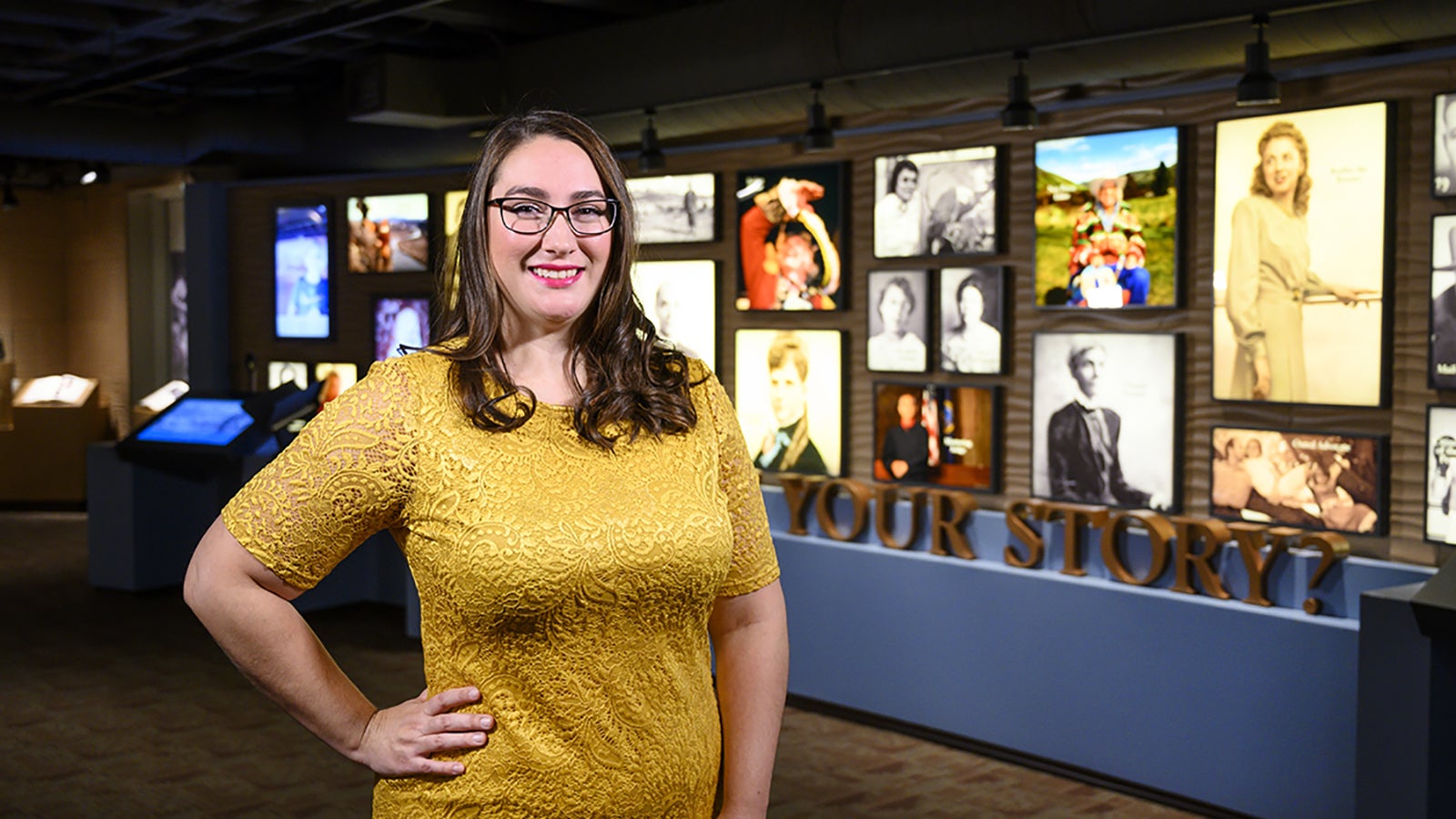In the summer of 2019, HannaLore Hein became the fifth state historian at the Idaho State Historical Society, and the first woman to hold the job since it became a credentialed position in the 1950s. That fact feels timely. In 2020, the society marks the centennial of the 19th amendment that recognized women’s right to vote. Hein will help oversee events, exhibitions and legacy projects, including a book and a film that will chart women’s contributions to the state.
“The tasks that are part of this position are important, not just for functioning of the agency, but for all Idahoans who want to feel connected to their past,” said Hein, a 2015 graduate of Boise State’s Master of Applied Historical Research program.
Her master’s project explored the history of Boise’s Egyptian Theater, the corporate histories of the firms behind its construction, and the broader story of entertainment modes in the West. She worked as a full-time research historian with Stevens Historical Research Associates in Boise for four years providing litigation support for environmental law surrounding issues like historic water rights and superfund cleanups.
Hein was an inaugural member of the university’s Venture College where she meshed her love of history and business and gained “a skill set that set her apart from others in her field,” said Nic Miller, Venture College director.
Hein’s ambitions include reviving the historical society’s publications program.
“I want new scholars to have an opportunity to leave their mark,” said Hein. “I want Idaho’s story to be heard on a national level.”

Quick takes:
Q. What is a great Idaho story that needs to be told?
H.H.: The story of Margaret Roberts. After I started my job I began researching past state historians. I was looking at biennial reports and Roberts’ name came up in the report from 1943. At that time she was the librarian and secretary – the sole staffer of the historical society. She asked lawmakers for money for more staffers and resources. She was from Hailey, Idaho, active in the Idaho Republican Party and the Columbian Club (one of Boise’s oldest, and still operating service clubs). She was an Idaho delegate in the 1913 Women’s Suffrage Parade in Washington, D.C. After she passed in the 1950s, her family donated her papers to Harvard University.
Q. What’s your favorite artifact in the state’s collection?
H.H.: An artifact that is related to both Margaret Roberts and suffrage history – the banner of the Idaho Council of Women’s Voters, carried by the Idaho delegation in 1913. Margaret Roberts donated it to the state collection. It’s an incredible piece. It’s hand painted silk. It includes the state seal, 1896 (the year women got the vote in Idaho, predating the 19th Amendment), and syringas (the state flower).
Q. If you could be an eyewitness to any historical event, what would it be?
H.H.: I would have loved to have seen any speech by Teddy Roosevelt in person.
Q. What’s a must-read history text?
H.H.: “The Legacy of Conquest” by Patty Limerick (one of Hein’s undergraduate professors at the University of Colorado-Boulder). That book was the first book that I read that started me on a path of interest in the history of the American West. The book came out in the 1980s and transformed the field. She let the story in the grey areas be told and got rid of mythic interpretations of Western history.
Q. What’s Boise’s greatest architectural prize?
H.H.: The Egyptian Theater, and not just because of its uniqueness. It stopped the wrecking ball. (In the 1970s, the Egyptian, then known as the Ada, was threatened by urban renewal).
– Story by Anna Webb
